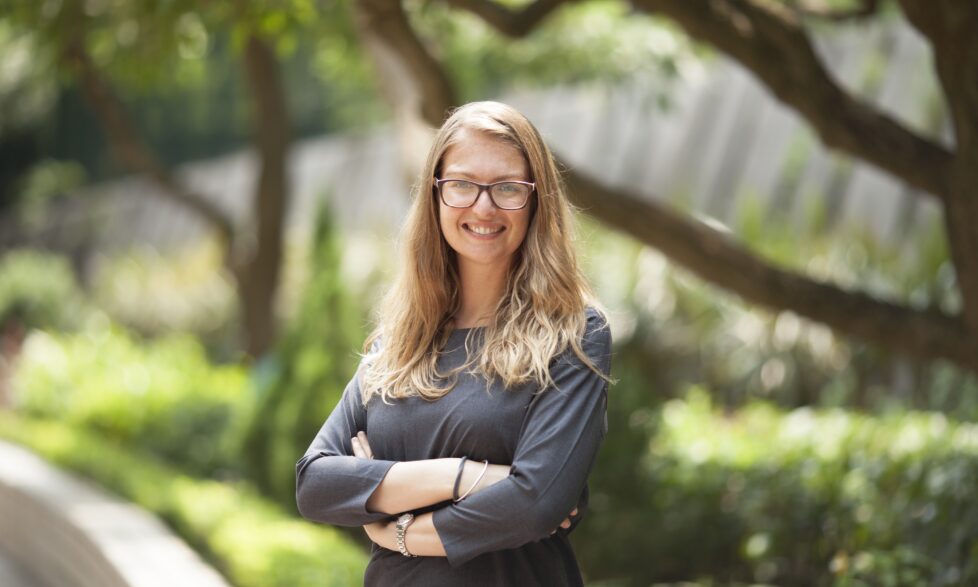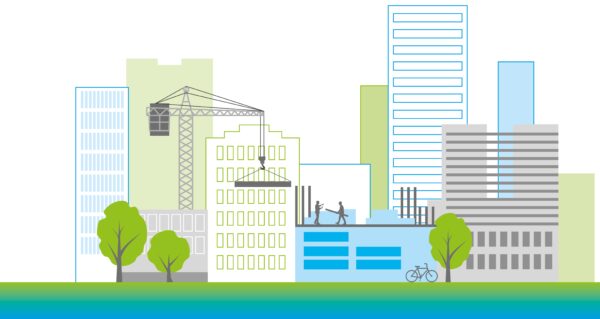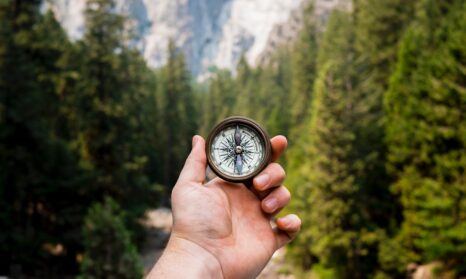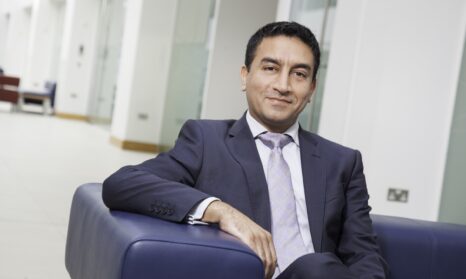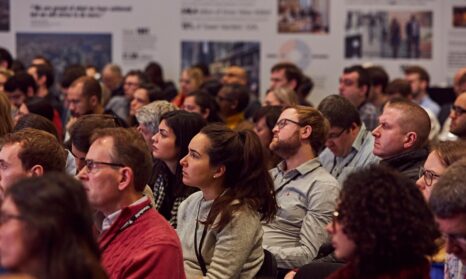Our SDGs story: How One Planet Company Cundall is embracing the SDGs
March’s Futurebuild conference will be focusing on taking action to achieve the UN Sustainable Development Goals (SDGs). Bioregional Head of Comms and Policy Julia Hawkins spoke to Amie Shuttleworth, Head of Sustainability at Cundall, to find out how the global engineering consultancy Cundall is using the Goals to inform its business purpose.
Why is it important that built environment companies address the SDGs?
It’s very much about what the whole world is trying to pull towards. That's why we used the SDGs when we did our materiality review with Bioregional, to come up with a new strategy – we wanted to see what was most appropriate for us as a business to contribute to. It's our duty as a purpose-driven business to be able to contribute where we can.
How did you start to incorporate the SDGs into your business?
We've been using the One Planet Living principles such a long time. People didn't want to change. But the SDGs are brand new and this is very much what the world is saying we need to look at now. So we needed at least to do a review, to see if there was anything else the business should actively be looking at.
This was quite challenging, because people didn't want to use another framework. But we did identify some gaps, particularly around climate change adaptation and ethics and equity - two areas we hadn’t looked at as much as we should have, but which are now part of our core strategy.
So how did you manage that?
We made the process a very practical one. We took every SDG and mapped them against the One Planet Living principles, seeing where the gaps were. Then we created an impact paper which set out what each issue is at a broad level, and which One Planet Living or SDG goals and targets respond to the issue. Then we looked at how they apply to the built environment. Then lastly we looked at what are we doing at Cundall now, and what we could be doing in the future.
We had a team of future leaders of the Cundall business doing the review, with the plan that it would be a future-proofed strategy.
What kind of things did the SDG mapping exercise reveal?
It threw up some really interesting insights. So for say, SDG6 on Clean Water and Sanitation, you might think that’s not really anything to do with buildings per se - but when you look into it practically it includes aspects such as installing water meters and water flow restrictors.
Also, when we did our first sustainability strategy five years ago, we didn’t really identify gender equality as a major issue. But the fact that there is a gender equality goal (SDG5) brought home that this is a massive element of sustainability. So now gender equality is part of our core impacts.
We’re also ensuring that we integrate the ethics and equity piece as a core part of our business mission. It’s about who we are and what we want to be actively consulting on.
The SDGs have also helped us understand the importance of climate change adaptation. We’ve been really focused on releasing less CO2 through building design, but not enough attention has been given to the fact that climate is already changing. We shouldn’t design based on historic weather patterns, we need to do projections and then design buildings based on those. We’re much more focused on that now.
Tell me more about climate adaptation planning
We’ve just completed our first bit of research on the different weather patterns in each of our offices in 21 locations around the world and what they’ll look like later this century. If you look at the two, three and four degree temperature rise scenarios, in some places that’s scary, especially South East Asia. The sea level rise impacts are much more severe than we anticipated.
We’re starting research to compare design codes against those projected weather patterns, so that we can give our clients the option of designing to code, or to these actual climate change projections.
What are your priorities now?
We’ve decided to actively identify projects that have positive environmental and social impacts so we can put our services to the best use. It’s less about getting on board a project and then trying to make it better, but instead going for the ones that already have a strong sustainability vision and making them even better.
We're going to be updating our standard specifications integrating mandatory sustainability aspects into them, so that even if someone isn't very engaged with sustainability they will by default integrate things like responsible sourcing of key materials.
We’re about three quarters of the way through updating our carbon emission factors for standard building materials, which tell us how much greenhouse gas emissions those materials are responsible for – how much carbon they embody.
We now employ quite a few embodied carbon specialists because our materiality review identified this as important. So when our structural engineers give different options to clients, they’re not just going to be giving quantities and costs of materials, they will also give embodied carbon information. It’ll be integrated into the decision-making process even if the client doesn't ask for it.
I’m really proud that everyone's been on board for that and moved it along quite quickly.
We want to be responsible engineers; this is a big part of who we are. We have engaged so many disciplines and got people quite excited. They are using their skills for good - which is why a lot of people join engineering in the first place.
How optimistic do you feel about the potential for the built environment sector to transform itself to the extent that is necessary to achieve the SDGs?
The SDGS have been adopted quite quickly. They’re giving people an opportunity to communicate in the same language. There's loads of really good stuff going on around the world. The World Green Building Council’s extremely demanding net zero carbon commitment is absolutely fantastic, galvanizing all parts of the supply chain within the built environment. WGBC has done a good job of promoting those companies like Cundall that have signed up to this, and now the national green building councils are trying to promote this too: for example, in the UK they're working on coming up with a definition of net zero carbon.
There's a lot happening in the sector and hopefully more to come, a lot of talk about the circular economy, the re-use of major building materials, how to create less waste, disruptive business models and so on. Its an exciting time.
What is your top tip to other built environment companies that might be struggling to get to grips with the SDGs – how do you recommend they get started?
Work out what's your scope of influence as a business and map the SDGs over that. Don’t just take SDGs and show how your existing strategy contributes towards them. Use them as an opportunity to evolve your strategy, to help you understand where you're already making most difference and where you could make more of a difference. Look for opportunities to redefine your business purpose. And make the SDGs tangible to what you do as a business – that helps you understand that this is not someone else’s problem.
Cundall is the world’s first consultancy to be formally endorsed by Bioregional as a One Planet Company.
Amie will be speaking on 6 March (16.30 - 17.40) at Futurebuild on what inspired her to get involved with the sustainable built environment.
Join Bioregional's workshop with practical advice on how to incorporate the SDGs in your business or development project: Learn how to use the SDGs in your work - 4.30-5.40pm, Wednesday 5 March.
Build a better future: the built environment and the Sustainable Development Goals
Built environment companies are struggling to get to grips with the Sustainable Development Goals. So we've created an easy-to-digest guide with practical advice on how to get started. Let's build a better future together
Download PDF



